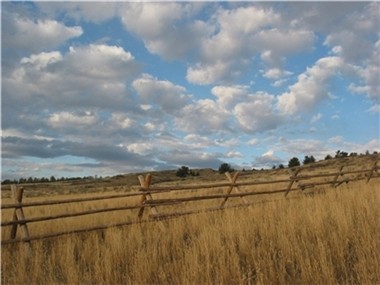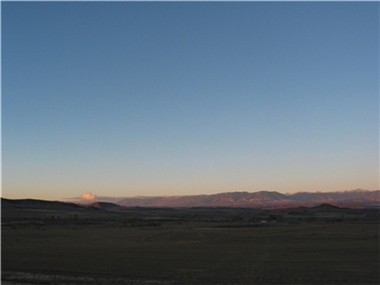When John and I first laid eyes upon this land we thought it was the most beautiful place on earth. Diamond M Arabians sits in Bridger Country and is surrounded by the snow capped Beartooth Mountains. When you stand upon the Beartooth Mountains and in the Sunlight Basin, you stand upon the very bones of Mother Earth, uplifted basement rock - 3.2 billion years old.

Bridger Country was once home to vast, nomadic buffalo herds and an important hunting ground for the Plains Indians. The Bannocks and Nez Perce crossed the Rockies from Idaho and Oregon on the Bannock Trail to hunt in the Clark's Fork and Yellowstone River Valleys. This name honors the famed Nez Perce Indian leader who trod the length of Bridger Country north with his weary people in a futile effort to escape the U.S. Cavalry and reservation life in late 1877. Indians not only traveled through the region, they've lived in Bridger Country for over 10,000 years. The Mountain Crow (Absaroka) held vision quests upon the highest peaks of Amanchab‚ Chije (The Pryor - or Arrowhead - Mountains). U-shaped structures of piled rock and wood built for the quests can still be seen in the high places. The openings of these structures always face the rising sun. Young warriors continued their vision quests, sometimes for a number of days, in the hopes of developing a special relationship with the spiritual world and for good luck in battle or material pursuits. Amanchab‚ Chije remains a holy place to the modern Crow. A little farther south, in the Big Horn Mountains, is the very ancient and controversial "Medicine Wheel" - a center of spiritual importance for many North American tribes. And then there were the trappers and explorers of the American West. The greatest of these men knew Bridger Country well. Former Lewis and Clark co-traveler, John Colter, wintered in the area. He was the first white man of record to see Bridger Country, the Sunlight Basin and Yellowstone National Park. And of course, the greatest mountain man and western explorer of all time, Jim Bridger, was once a very important part of Bridger Country.
The Pryors are home to endangered peregrine falcons, rare spotted bats and the Yellowstone cutthroat trout. These mountains protect some of the most diverse plant life in Montana, among which are the rare shoshonea (a mat forming perennial) and the bladderpod. Ten species of bats live in the hundreds of caves and abandoned mine shafts - cougars cry from the high limestone cliffs - and a small, but enduring herd of Big Horn Sheep scrabble up and down the Pryor's sheer rock outcroppings in search of forage. But today, the Pryor's biggest claim to fame may well be the wild horses that thunder across the Pryor Mountain National Wild Horse Range...the first ever such area designated for the preservation and use of the wild horse.
We are proud to have achieved a life long dream and to live in such a beautiful part of the country.
Jim Bridger, his eyesight failing and his legendary health declining, spent most of his last years upon a porch on his Missouri farm just south of Kansas City. It is recorded that the old trapper often sat, chin on cane, with his clouded eyes fixed hard on the West. " I wish I was back there among the mountains again - you can see so much farther in that country," he said.

And it's true. You really can see farther...and clearer...out here.
